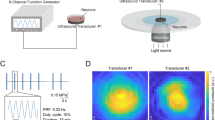Abstract
Electrical alternans, the alternation in action potential morphology, has been suggested as an important cause of potentially dangerous cardiac rhythm disorders. Previous studies have developed alternans control strategies based on the dynamics of the relationship between action potential duration and the previous diastolic interval. We demonstrate that alternans in a single cardiac cell can also be controlled by directly modifying the underlying ion channel dynamics. Surprisingly, we find that, for a detailed canine ventricular cell model, the best time to apply the control stimulus is not during the repolarization phase of the action potential, but rather during the early plateau phase, when the charge requirements are two orders of magnitude smaller. Computer simulations show that a single control stimulus applied during the early plateau can completely eliminate small-amplitude alternans, while a small number of stimuli can rapidly extinguish large-amplitude alternans. We have also developed an effective control algorithm that uses only the membrane potential as control input and requires no prior detailed knowledge of the cell dynamics. The study suggests that control strategies based on ion channel dynamics can provide new directions for the development of algorithms intended to control dangerous cardiac rhythm disorders.
Similar content being viewed by others
References
Bielawski, S., D. Derozier, and P. Glorieux. Controlling unstable periodic-orbits by a delayed continuous feedback. Phys. Rev. E 49:R971–R974, 1994.
Christini, D. J., and J. J. Collins. Using chaos control and tracking to suppress a pathological nonchaotic rhythm in a cardiac model. Phys. Rev. E 53(Part A):R49–R52, 1996.
Christini, D. J., K. M. Stein, S. M. Markowitz, S. Mittal, D. J. Slotwiner, M. A. Scheiner, S. Iwai, and B. B. Lerman. Nonlinear-dynamical arrhythmia control in humans. Proc. Natl. Acad. Sci. U.S.A. 98:5827–5832, 2001.
Courtemanche, M. Complex spiral wave dynamics in a spatially distributed ionic model of cardiac electrical activity. Chaos 6:579–600, 1996.
Echebarria, B., and A. Karma. Spatiotemporal control of cardiac alternans. Chaos 12:923–930, 2002.
Fox, J. J., J. L. McHarg, and R. F. Gilmour. Ionic mechanism of electrical alternans. Am. J. Physiol. 282:H516–H530, 2002.
Garfinkel, A., M. L. Spano, W. L. Ditto, and J. N. Weiss. Controlling cardiac chaos. Science 257:1230–1235, 1992.
Garfinkel, A., Y.-H. Kim, O. Voroshilovsky, Z. Qu, J. R. Kil, M.-H. Lee, H. S. Karagueuzian, J. N. Weiss, and P.-S. Chen. Preventing ventricular fibrillation by flattening cardiac restitution. Proc. Natl. Acad. Sci. 97:6061–6066, 2000.
Gauthier, D. J., G. M. Hall, R. A. Oliver, E. G. Dixon-Tulloch, P. D. Wolf, and S. Bahar. Progress toward controlling in vivo fibrillating sheep atria using a nonlinear-dynamics-based closed-loop feedback method. Chaos 12:952–961, 2002.
Gilmour, R. F. A novel approach to identifying antiarrhythmic drug targets. Drug Discov. Today 8:162–167, 2003.
Gray, R. A., D. J. Huelsing, F. Aguel, and N. A. Trayanova. Effect of strength and timing of transmembrane current pulses on isolated ventricular myocytes. J. Cardiovasc. Electr. 12:1129–1137, 2001.
Guevara, M. R., G. Ward, A. Shrier, and L. Glass. Electrical alternans and period-doubling bifurcations. IEEE Computers in Cardiology, IEEE Computer Society, Silver Spring, 1984, pp. 167–170.
Hall, K., D. J. Christini, M. Tremblay, J. J. Collins, L. Glass, and J. Billette. Dynamic control of cardiac alternans. Phys. Rev. Lett. 78:4518–4521, 1997.
Hall, M. G., and D. J. Gauthier. Experimental control of cardiac muscle alternans. Phys. Rev. Lett. 88: 198102, 2002.
Karma, A. Spiral breakup in model equations of action potential propagation in cardiac tissue. Phys. Rev. Lett. 71:1103–1106, 1993.
Karma, A. Electrical alternans and spiral wave breakup in cardiac tissue. Chaos 4:461–472, 1994.
Karma, A. New paradigm for drug therapies of cardiac fibrillation. Proc. Natl. Acad. Sci. U.S.A. 97:5687–5689, 2000.
Koller, M. L., M. L. Riccio, and R. F. Gilmour. Effects of [K+]o on electrical restitution and spatiotemporal organization during ventricular fibrillation. Am. J. Physiol. Heart Circ. Physiol. 279:H2665–H2672, 2000.
Lee, M. H., S. F. Lin, T. Ohara, C. Omichi, Y. Okuyama, E. Chudin, A. Garfinkel, J. N. Weiss, H. S. Karagueuzian, and P. S. Chen. Effects of diacetyl monoxime and cytochalasin D on ventricular fibrillation in swine right ventricles. Am. J. Physiol. Heart Circ. Physiol. 280:H2689–H2696, 2001.
Li, M.-Y., and N. F. Otani. Ion channel basis for alternans and memory in cardiac myocytes. Ann. Biomed. Eng. 31:1213–1230, 2003.
Nolasco, J. B., and R. W. Dahlen. A graphic method for the study of alternation in cardiac action potentials. J. Appl. Physiol. 25:191–196, 1968.
Pastore, J. M., S. D. Girouard, K. R. Laurita, F. G. Akar, and D. S. Rosenbaum. Mechanism linking T-wave alternans to the genesis of cardiac fibrillation. Circulation 99:1385–1394, 1999.
Pyragas, K. Continuous control of chaos by self-controlling feedback. Phys. Lett. A 170:421–428, 1992.
Qu, Z., J. Weiss, and A. Garfinkel. Cardiac electrical restitution properties and stability of reentrant spiral waves: A simulation study. Am. J. Physiol. 276:H269–H283, 1999.
Rappel, W.-J., F. Fenton, and A. Karma. Spatiotemporal control of wave instabilities in cardiac tissue. Phys. Rev. Lett. 83:456–459, 1999.
Riccio, M. L., M. L. Koller, and R. F. Gilmour. Electrical restitution and spatiotemporal organization during ventricular fibrillation. Circ. Res. 84:955–963, 1999.
Walker, M. L., and D. S. Rosenbaum. Repolarization alternans: Implications for the mechanism and prevention of sudden cardiac death. Cardiovasc. Res. 57:599–614, 2003.
Watanabe, M., and R. F. Gilmour. Strategy for control of complex low-dimensional dynamics in cardiac tissue. J. Math. Biol. 35:73–87, 1996.
Weidmann, S. Effect of current flow on the membrane potential of cardiac muscle. J. Physiol. 115:227–236, 1951.
Weiss, J. N., A. Garfinkel, H. S. Karagueuzian, Z. Qu, and P.-S. Chen. Chaos and the transition to ventricular fibrillation: A new approach to antiarrhythmic drug evaluation. Circulation 99:2819–2826, 1999.
Zipes, D. P., and H. J. J. Wellens. Sudden cardiac death. Circulation 98:2334–2351, 1998.
Author information
Authors and Affiliations
Rights and permissions
About this article
Cite this article
Li, M., Otani, N.F. Controlling Alternans in Cardiac Cells. Annals of Biomedical Engineering 32, 784–792 (2004). https://doi.org/10.1023/B:ABME.0000030254.33176.f8
Issue Date:
DOI: https://doi.org/10.1023/B:ABME.0000030254.33176.f8




